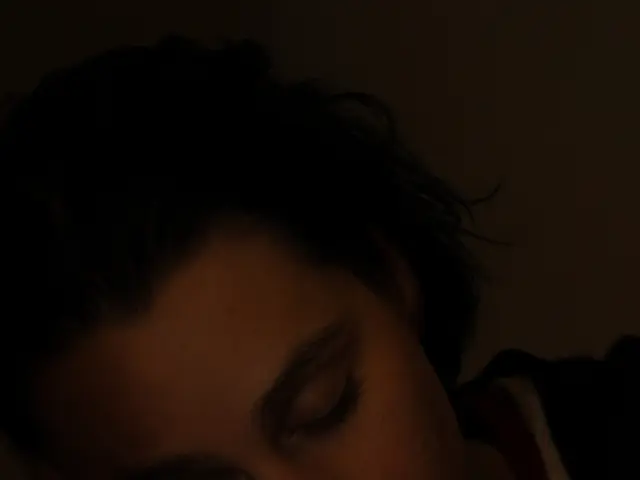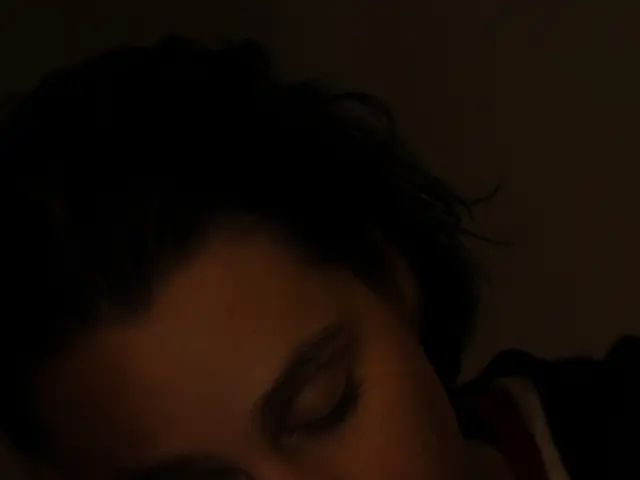Infant Resists Slumber: Exploring the Reasons Behind Sleeplessness in Infants
Struggling to get your little one to snooze can push anyone's patience to their limits. With bedtime becoming a test of wills, nighttime wake-ups, and no seeming solutions, frustration sets in, especially when these issues persist and impact the entire family. Luckily, this piece sheds light on why young children might struggle with sleep, the causes behind their restlessness, and why methods like "crying it out" aren't the best option. It also offers five helpful tips to aid in catching some Z's.
Why is good sleep crucial for children?
A restful slumber isn't just important for grown-ups to tackle the day ahead; it's especially vital for kiddos. During sleep, numerous tasks are accomplished that aid in their physical and mental development. The German Society for Sleep Research and Sleep Medicine (DGSM) explains that children process what they've encountered during the day and learn new things while dozing. This is why kids usually need more slumber than adults. They cycle through different sleep phases, each with its unique tasks:
- During REM (Rapid Eye Movement) sleep, a phase marked by a brain buzzing with activity, emotions are processed, feelings and experiences are consolidated, contributing to emotional development and coping with new situations.
- Deep sleep is essential for motor skills and knowledge consolidation. Here, kids "store" and solidify things like walking, riding a bike, or new skills they've learned. They also produce growth hormones during deep sleep, making proper rest essential for physical development.
Why won't my child drop off to sleep?
Most parents have been there: the little one lies in bed, looks tired, but just won't sleep. Sometimes, hours pass before things settle down. This scenario can be stressful and challenging, especially when sleep problems become persistent and affect the entire fam. While occasional sleep struggles are normal, consistent issues may stem from unhealthy sleep habits.
The Federal Institute for Public Health points out that poor sleep habits might be the culprit. For example, some children become accustomed to falling asleep only when carried around, driven in the car, or pushed in a stroller. These sleep aids can quickly become habitual, so the child needs them to nod off. The Federal Institute for Public Health does not typically advise against using such aids occasionally. However, it's essential to consider the frequency and duration of these sleep rituals. So, it's crucial for parents to establish a sleep routine that's maintainable in the long run and helps the child fall asleep independently.
Common reasons for sleep disturbances in toddlers
Sleep disturbances can be tricky for many families with toddlers. Often, there are no severe underlying issues: after an exciting day filled with new experiences, it can sometimes take time for the child to unwind before drifting off. Perhaps they had fun at preschool, tried a new game, or were invited to a birthday party. These experiences need to be processed in the brain before sleep can occur. Major life changes like the birth of a sibling, moving, or starting daycare can also be emotionally taxing for little ones and affect their sleep. Everyday tension factors like arguments or worries can also make it difficult for them to catch some Z's. The DGSM also mentions the following elements that can lead to sleep disturbances:
- High Media Consumption: Extended screen time can negatively impact children's sleep routines. The German Society of Sleep Medicine advises that two-year-olds should limit screen use to 20 minutes a day, while children up to five years old should cap screen time at 30 minutes—ideally, none at all. It's crucial for parents to set a good example, as kids tend to mimic adult behavior. Additionally, screens should never be used as a reward or to calm children, as they might become reliant on screens for relaxation or good behavior.
- Nightmares: A common cause of sleep problems is nightmares, which often occur between ages six and ten. Children may develop a fear of going to bed, leading to daytime grogginess and behavioral issues.
- Night Terrors: Young children often experience night terrors, characterized by waking up crying, showing signs of fear, rapid heartbeat, heavy breathing, flushed skin, and sweating. Approximately 35% of young children might experience this, but it's usually harmless and fades with age.
- Obstructive Sleep Apnea: Rare physical reasons like obstructive sleep apnea might underlie sleep disturbances in some cases. This condition causes brief breathing pauses during sleep, which in young children may manifest as loud snoring, unusual sleep positions, underweight, or speech development delays. However, this affects only about 5% of children.
5 Tips to Help Young Children Sleep
Remaining patient is key in helping young children develop and maintain healthy sleep habits. Some children adapt quickly, while others require more time. It takes time for changes in sleep patterns to solidify, and setbacks are normal. Parents should not be discouraged if progress seems slow or if the child experiences difficulties along the way. Here are five tips to help your little one settle down and sleep peacefully:
- Established Rituals and Regular Routines: Regular bedtimes and wake-up times, attending to a child's tiredness signals, and soothing evening rituals like reading, singing songs, or cuddling with a favorite stuffed animal can aid in setting a healthy sleep rhythm.
- Create a Comfortable Sleep Environment: Ensure the bedroom is quiet, dark, and neither too warm nor too cold. Bright lights and loud noises may hinder sleep.
- Encourage Outdoor Activity and Daylight: Regular physical activity and exposure to natural sunlight during the day can promote better sleep.
- Gradually Adapt to New Sleep Habits: If a child resists sleeping alone or in their own bed, it may help to initially sit beside the bed instead of getting into it. Slowly accompanying the child can help them adapt.
- Positively Frame Bedtime: Making bedtime enjoyable for children is crucial. This can involve pleasant rituals like singing a lullaby, playing quiet music, or telling a bedtime story.
The Risks of the "Crying It Out" Method
Letting children cry themselves to sleep or even locking the bedroom door, as encouraged by American physician Lisa Selina Davis in the New York Times, is strongly discouraged by experts. Such methods can have severe psychological consequences for children. Child psychiatrist Karl Heinz Brisch warns in an interview with Focus: "When children are left to cry, they internalize feelings of 'I'm alone, I'm helpless, I'm panicked, I'm at the mercy of others, and no one is coming to help me. I will die because I can't survive without help.' This feeling of panic and helplessness is intolerable for babies, causing them to dissociate and 'shut off.' As a result, they no longer feel fear, panic, hunger, thirst, or any other sensations, and they stop communicating altogether." The effects can be far-reaching, including damaging the parent-child bond and increasing the risk of psychological trauma in adulthood. Additionally, excessive crying releases too much stress hormone, which can harm a child's developing brain.
Good sleep is not only essential for adults to tackle the day ahead, but it is especially vital for children as they process what they've encountered during the day, learn new things, and develop physically and mentally. Poor sleep habits, such as relying on sleep aids like being carried or driven, can lead to sleep disturbances in toddlers. To help young children sleep peacefully, parents can establish rituals and regular routines, create a comfortable sleep environment, encourage outdoor activity and daylight, gradually adapt to new sleep habits, and positively frame bedtime. The "crying it out" method, where children are left to cry themselves to sleep, is strongly discouraged by experts as it can have severe psychological consequences for children, potentially damaging the parent-child bond and increasing the risk of psychological trauma in adulthood.








